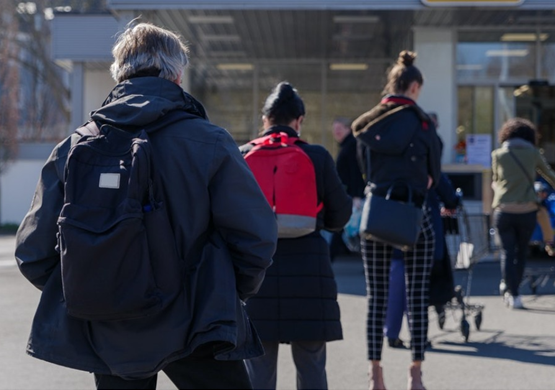How to Monitor Store Occupancy
In response to the coronavirus pandemic, retailers, particularly supermarkets, have had to quickly adapt. This blog post will explore the challenge retailers face in monitoring their store occupancy levels but will also provide information about solutions available.
A Challenge: Monitoring Store Occupancy Levels
Of the many recommendations for retail stores during this challenging time, one is to decrease the number of customers allowed in the store at a time (source). A store’s maximum occupancy depends on its size, as well as the number of customers it serves daily. Many retail stores have adopted this measure, having announced that they are limiting the number of people who will be allowed inside their stores at one time in an effort to promote social distancing (source). And once a store reaches its capacity, customers are then admitted inside on a ‘1-out-1-in’ basis.
Many stores now employ marshals or “greeters” at the store entrance. Their role is to ensure a limited number of shoppers only enter the store at any one time. They also ensure shoppers are queuing responsibly and are standing two metres apart from each other.
However, a common issue occurs at the entrance of stores. At this location there are shoppers queuing outside, often in disarray with a staff member on the door trying to control the flow. This issue is twofold; one problem is how to effectively control store occupancy levels and the second is the high added cost of employing staff to marshal the store entrance.
The Solution: Occupancy Management
The first part of the solution is to “foot print” the store’s outside entrance area with social distancing markers spaced 2 metres or 6 feet apart. This is in accordance with recommendations from the CDC and the UK Government that people stay at least 2 metres (6 feet) apart from each other, in order to prevent the spread of the coronavirus.
The second part of the solution is an illuminated sign or a traffic light above the entrance door. It enables shoppers to queue in accordance with social distancing with signage at the front door explaining the situation. Furthermore, an automated system that counts people in and out in accordance with the store’s maximum capacity guidelines solves the costly problem of providing additional staff to marshal the entrance.
Benefits of a Live Occupancy Management Solution
1. Positive ROI: Significant cost savings can be realised by deploying an automated live occupancy management system
2. Labour deployment efficiency and savings: It is no longer necessary to employ staff to deal with a situation where they have little to no training and are in close contact with the general public
3. It is a simple, innovative solution to bring order to the queue outside the store
4. A rapid deployment of a standalone system will control the situation and release key staff
5. Reassures both employees and the general public that it is safe to shop in your store
6. Mitigate risk during peak shopping experience (i.e. Black Friday)
7. Comply with the “new norm” for social distancing and shopping experience: this is critical for the current Covid-19 pandemic and for the new retail norm post pandemic
8. It is a future proof solution that will continue to benefit retailers for years to come
Solution Availability
Occupi by Ocucon is our latest product. It uses Deep Learning technology to recognise people and count the numbers entering and exiting the store. Occupi allows access only when the total number of customers falls below the store’s set threshold. It allows for a fully automated, unmanned control over the store occupancy level. Interested in learning more about Occupi? Click here or contact us to learn more.


